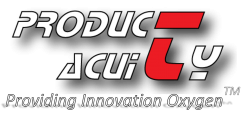Innovation Framework

Why
Why
What
What
When we ask the question “what to innovate,” we recognize that the unpredictable nature of change requires us to prepare for many types of innovation options for a wide range of possible futures. Therefore we use the typology introduced by Trott (2008) to gain greater specificity about the kind of innovation that is applied. The seven types of innovation are the following:
- Product Innovation: the development of a new or improved product.
- Process Innovation: the development of a new process, for instance a manufacturing process, talent-management process or supply process; typically driven by digitalization, automatization, robotics, artificial intelligence, and new man-machine interfaces such as tablets and smartphones that can be integrated in managing and optimizing processes.
- Organizational Innovation: a new venture division, a new innovation center, internal communication system, and introduction of a new accounting procedure are some examples.
- Management Innovation: examples include TQM (total quality management) systems, BPR (business processes reengineering) and Agile Development for software engineering.
- Production Innovation: quality circles, just-in-time (JIT) manufacturing systems, new production-planning software as well as new, more advanced and technology-related areas such as Industrial Internet of Things (IIoT) used to connect machines to each other as well as to producers, operators, and even customers.
- Commercial/Marketing Innovation: can be new financing arrangements, new sales possibilities, pricing models with low-entry process levels, market approaches (e.g., direct marketing); this can also be referred to as business-model innovation, meaning the development of new or improved business models and value propositions.
- Service Innovation: examples include Internet-based financial services (typically referred to as FinTech), user-experience-based service innovation using new interfaces like virtual reality and augmented reality.
By linking why with what, we delineate the strategic rationale of the innovation-management work within the organization.
How
How
In the Innovation Framework, we divide how into four components: Leadership, Capabilities, Personas, and the Innovation Process. The leadership styles in the Innovation Framework are based on the work of Loewe, Williamson, and Wood (2001), who describe five types of leadership such as the following:
- The Cauldron: an entrepreneurial style where the business model is frequently challenged.
- The Spiral Staircase: a style where you climb upward without losing the overall goal.
- The Fertile Field: a style where the organization tries to use existing capabilities and resources in a new way.
- The Pac-Man: a style where you invent, outsource, and finance startups.
- The Explorer: a style where you explore possibilities and invest time and money in them without demanding short-term profit.
The Innovation Personas in the Innovation Framework is based on the Ten Faces of Innovation described in the work of Kelly and Littman. Kelly and Littman divide the ten personas into three categories: learning personas, organizational personas, and building personas. The learning personas are individuals digging for new sources and knowledge; the organizational personas are the ones structuring, challenging, and orchestrating the work; the building personas are typically the intellectual architects, the storytellers, and the caregivers, as well as the ones setting up a proper environment. The ten Innovation Personas are as follows:
- Persona: The Anthropologist (Learning)
- Persona: Cross-Pollinator (Learning)
- Persona: Experimenter (Learning)
- Persona: Hurdler (Organizational)
- Persona: Director (Organizational)
- Persona: Collaborator (Organizational)
- Persona: Experience Architect (Building)
- Persona: Set Designer (Building)
- Persona: Storyteller (Building)
- Persona: Caregiver (Building)
The sixty-six capabilities in the Innovation Framework are organized into sixteen aspects to simplify the analysis, all decribed in the Wheel of Innovation®. The Innovation process, consisting of the phases ideation, project selection, and commercialization.
Where
Where
An innovation process is realized through the tools and infrastructure that support it and the people who are involved in the process. Today’s innovators need to determine whether their innovation processes will be purely internal or will take some form of open innovation, where stakeholders external to the company or organization are involved in the process. These decisions will determine the innovation infrastructure provided by the company as well as three related elements such as the following:
- The type of innovation (e.g., open innovation, engaging people internally and externally)
- Collaborative platforms to support agile and fast value creation
- The physical workplace (where people are engaged and motivated)

 today (281.858.3271) for a free no obligation discussion of your current needs and situation.
today (281.858.3271) for a free no obligation discussion of your current needs and situation.